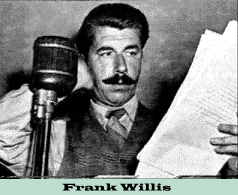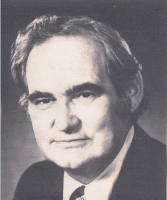“Radio’s First Voice” is the title of Ormand Raby’s book on the life of Canadian Reginald Fessenden. On December 23, 1900 he sent a voice message a mile away to his assistant saying “One Two Three Four, is it snowing where you are Mr. Theissen, if it is telegraph back to me”. It was snowing and he did confirm that and the fact that his voice message had come through.
That was the dawn of Radio.
Six years later, on Christmas Eve, 1906, from his home in Boston, he startled wireless operators on ships off the coast by sending out radio’s first program, playing “Silent Night” on the violin, reading from the Bible and closing with Christmas carols sung by Fessenden, his wife and a friend.
Another 14 years (and a World War) would pass before radio found its voice in North America. XWA, Montreal ( later CFCF for “Canada’s First”) transmitted by “radio telephony” a speech heard at a national conference in Ottawa. That was six months or more before KDKA, Pittsburgh, which claims to be the world’s first radio station, signed on.
The Twenties saw an explosion of interest in the novelty called Radio. Electrical manufacturers refined receiving equipment and retailers established radio stations to give buyers of their sets something to listen to. Major newspapers across Canada also applied for licenses, but for different reasons. Some saw the immediacy of radio as a threat to their monopoly on news and a rival for advertising dollars; they wanted to control the new medium before it supplanted them. Others saw radio as a valuable promotional tool. By 1924, “newspaper” stations were established from coast to coast: CKCD Vancouver (The Vancouver Daily Province); CFAC Calgary (Calgary Herald); CHBC, Calgary (The Albertan Province); CJCA Edmonton (Edmonton Journal); CKCK Regina (The Regina Leader); CFCA Toronto (The Toronto Star); CHVC Toronto (The Toronto Telegram); CJCS Hamilton, (The Hamilton Spectator); CJCF Kitchener (The Kitchener News-Record); CJGC London (The London Free Press), CKAC Montreal ( La Presse); CKCI Quebec City (Le Soleil). (1)
For all this journalistic presence, news content on Canadian radio was minimal in the Twenties. After 1923, passengers aboard Canadian National trains heard brief news and weather reports carried on a CNR Network. Elsewhere, no radio operator challenged the dominance of newspapers, and newspapers made no effort to push the fortunes of the new medium on the block. There were exceptions. Foster Hewitt, a Toronto Star reporter assigned to do sports, interviews, travelogues, etc. on the Star-owned CFCA in the early 1920s, once offered to send out copies of the station’s schedule for ten cents in cash or stamps. Bags and bags of mail poured into the newsroom. According to his Star colleague, Gordon Sinclair, Hewitt spotted the potential of radio immediately. When he persuaded management to run radio stories and schedules, circulation zoomed. (2)

Newscasting evolved slowly as a distinct feature of radio in Canada. Newscasts — usually at 8:00 AM, 12:30 pm and 6:00 pm — began to be heard in the late Twenties and early Thirties on a few larger stations, their content still lifted (sometimes with permission but often without) from the pages of local newspapers, or from a leased wire service. Earle Kelly, a Vancouver Province reporter known as “Mr. Good Evening,” can rightly be called Canada’s first personality newscaster. Over a period of twenty years beginning in the early 1920s, his nightly 15 minute summaries were heard on several Vancouver stations–The Province’s own CKCD in the beginning, and later, on CNRV and CKWX. He read standing up and his “magazine” could contain as many as ninety items! A legend in his own lifetime, Kelly was remembered for his sign-off (” A restful Good Evening”). (3)

CHWC Regina, which shared a frequency with the Leader-Post’s CKCK, struck a deal with the Regina Star, the Leader-Post’s rival, to carry news from the Star as a promotion. Star reporter Andy McDermott edited and read the news. Meanwhile, over at CKCK, a Leader-Post reporter, Gee Johnston, using the pseudonym of “The News Butcher”, broadcast 15 minutes of news gathered by the Leader-Post editorial staff four nights a week at 10:30 pm. (A “News Butcher” was a vendor who sold newspapers, confections and drinks in the aisles of railway passenger coaches).

Harry J. Boyle recognized the potential of radio news in a rural community, as a freelance newspaper reporter covering a murder trial in Wingham, Ontario. He approached “Doc” Cruickshank, owner-operator of CKNX Wingham, and secured his permission to experiment. The resulting flow of news and information developed exclusively for radio made the tiny station a pace-setter
Ted Rogers, Sr., CFRB, Toronto pioneered in several journalistic ventures in the late 1920s. A microphone was installed in the Globe newsroom in 1928. to pick up news-flashes of local and international interest. Two years later the station carried live coverage from the roof of its Jarvis Street studio of the flight of the British airship, the R-100, over the city. The announcer was Wes McKnight, the station’s first regular sportscaster and Program Director. (4) Four years later the station engaged Jim Hunter, a veteran Toronto Telegram reporter, as its first featured newscaster. His strident style and folksy humour at 8:00AM and 6:00 PM daily endeared him to a generation of loyal listeners. (5)
By the mid 1930s, the importance of news as a vital component of broadcast schedules was no longer in doubt, to radio proprietors at least. Newspaper resistance was still strong, but less important now, as tailored-for-radio news-wire services appeared. Trans Radio News of New York transmitted by short-wave radio in Morse Code. Among stations subscribing to this service were CFCF Montreal and CJRM Regina. In the case of CJRM, the transmissions were received at its Belle Plain transmitter 20 miles to the west of the city, copied down by the engineer on duty and rushed to the studio in Regina. Unfortunately, the signal would fade out or be disrupted by interference and thus could not be relied upon.
In 1936, British United Press (BUP), headquartered in Montreal, launched Canada’s first coast-to-coast radio news wire, and it quickly found eager subscribers among private radio stations. Robert W. “Bob” Keyserlingk was appointed Managing Editor, and in 1942, became Managing-Director. Until such time as conventional teletype machines became available, its newscasts were transmitted over CN/CP telegraph lines to stock-broker type ticker tape machines at the station, and had to be cut and pasted in strips on sheets of paper. There was a back-up machine at the local telegraph office. CKCK‘s Lyman Potts who did the 12:30 news in ’36 recalls that half the time the machine didn’t work and Canadian Pacific Telegraphs would rush their pasted copy by messenger boy which would arrive virtually seconds before air-time, allowing no time for the correcting of mistakes. (6)

With the evolution of Canadian Press’ radio news wire (Press News – later, Broadcast News) in the early 40s, and the volume of news written and edited especially for Canadian listeners, no one could doubt the impact or importance of a medium that was able to transmit live and direct the words of a European dictator or the fireside chats of an American president as news-in-the-making. For Canadians there was even more dramatic proof in a story that held North America spellbound for twelve days in April 1936. J. Frank Willis, a neophyte CHNS announcer on the recently organized CBC, broadcast five-minute bulletins every half hour for 111 hours from the scene of a Nova Scotia mine disaster. His reports on the rescue of three men, one had died, trapped 141 feet underground at the Moose River Gold Mine, were carried by every one of Canada’s 58 radio stations, and some 650 stations across the United States.
Bibliography:
AUDIO:
Andy McDermott: Interview by Ken Bambrick
Part 1 (31:16, MP3 Format)
Part 2 (15:38, MP3 Format)
National Archives
Harry Boyle: Interview by Phil Stone
time: 30:00, MP3 format.
CCF Library
SOURCES:
1. “Signing On,” The Birth of Radio in Canada: Bill McNeil and Wolfe, Doubleday of Canada, Toronto, 1982.
2. “Will The Real Gordon Sinclair Please Stand Up,”: Gordon Sinclair, McClelland and Stewart, Toronto, 1966
3. “Imagine Please,”: Dennis Duffy, B.C. Archives Sound Heritage Series,# 38.

4. “Sinc, Betty and the Morning Man”: Donald Jack, MacMillan of Canada, Toronto, 1977.
5. CFRB: 1937 Year Book and Radio Log: Picture P. 31.
6. Lyman Potts, Ken Bambrick interview series. National Archives
7. “The Sound and the Fury,” An Anecdotal History of Canadian Broadcasting; Warner Troyer, John Wiley and Sons Ltd. Toronto, 1980.
Pete McGarveyPete McGarvey – April, 1996
